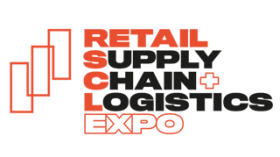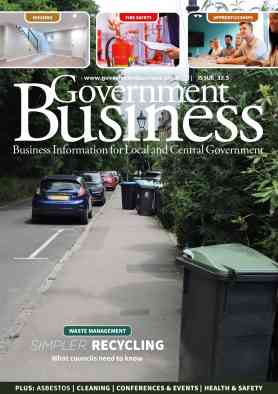Safeguarding Commercial Fire and Electrical Safety Across South England.

More than just cleaning
From reducing disease transmission to reinforcing public confidence and meeting environmental goal, cleaning in the public sector plays a vital yet often overlooked role
Cleaning in the public sector is more important than just keeping up appearances, it is a critical part of maintaining public health and safety. Clean environments help prevent the spread of disease, create safer spaces for workers and the public, and support sustainability goals. Whether it’s a hospital, school, public restroom, transit hub, or government office, cleanliness has a profound impact on the people who use and rely on these spaces every day.
This article looks at the importance of cleaning in the public sector and explains why consistent, well-planned cleaning practices are key to keeping these services running smoothly and responsibly.
Cleanliness has a noticeable effect on how the public views public services. A clean environment signals that a space is well-managed, professional, and respectful of the people who use it. A sparkling floor, clean air, and tidy surroundings signal that public funds are being used responsibly, and that service providers care about community well-being.
Visible cleanliness can influence how much trust and confidence people place in public services. On the other hand, neglected or dirty facilities may lead to complaints, reduced usage, or reputation damage.
Health & Safety
Perhaps the most critical role of cleaning in public environments is to protect the health of those who use them. Public spaces, especially high-traffic areas like hospitals, schools, and public transport, are natural hotspots for the transmission of bacteria, viruses, and other pathogens.
Regular and thorough cleaning helps reduce the spread of viruses and bacteria that can lead to outbreaks of illness. In places like hospitals and care homes, where vulnerable populations are at higher risk, cleaning is not just a routine task but necessity against infection. By maintaining hygiene standards, public sector cleaning efforts help to prevent the spread of illness and infection and maintain public health.
Cleaning is also important for maintaining physical safety. Spills and clutter can lead to accidents like slips and falls. Regular cleaning routines help identify and remove potential dangers and contribute to a safer environment for employees and visitors.
Best practice
In order for cleaning to have noticeable impact, it needs to be done properly and this depends on clear strategies, trained staff and the right tools. Cleaning schedules need to be tailored to the needs of the specific environment. For example, hospitals require frequent disinfection of high-touch surfaces, while schools may focus more on daily sanitation and allergen control.
It is important that staff are trained adequately on how to use equipment and products safely and efficiently. Proper training helps prevent misuse of chemicals, reduces the risk of accidents, and ensures that cleaning is done to a high standard across all areas. Well-trained staff are also more likely to spot potential hygiene or safety issues before they become serious problems.
Technology is also playing an increasingly important role in modern cleaning operations. Digital monitoring systems can track when and where cleaning has taken place, helping supervisors ensure tasks are completed on schedule and to the required standard. These systems also support transparency and accountability, especially in large facilities where manual oversight is difficult. In some cases, data collected from these tools can be used to improve efficiency and allocate resources more effectively.
By combining the right methods, tools, and training, public sector organisations can deliver cleaning services that are not only more effective but also more cost-efficient and sustainable over time.
Sustainability
In the face of climate change and rising environmental awareness, sustainability has become a key concern across all areas of the public sector and cleaning plays a key part in that effort. Methods to boost sustainability in cleaning include using eco-friendly products, minimising water and energy consumption, and managing waste responsibly. For example, switching to biodegradable cleaning agents and reusable materials can significantly cut down on pollution and landfill waste.
Public institutions also play an important educational role. By modelling sustainable practices, they help set expectations and influence behaviour in the wider community. When a school adopts green cleaning practices, for example, it not only protects the health of its students and staff, it also teaches the next generation about environmental responsibility.
Budgeting
While cleaning is essential to the operation and reputation of public services, it is often one of the first areas targeted during budget cuts. However, reducing investment in cleaning can lead to higher costs in the long run. Poor hygiene can contribute to increased absenteeism among staff, more frequent repairs due to neglected maintenance, and even costly legal action if public health is compromised. By contrast, strategic investment in cleaning, through efficient scheduling, high-quality equipment, and well-trained staff, can prevent these outcomes and offer better value over time. Conducting regular cost-benefit analyses can help public institutions understand where cleaning contributes to savings, such as by preventing infection-related closures or minimising safety incidents.
Cleaning is a vital part of maintaining healthy, safe, and trusted public services. From preventing the spread of disease to reducing accidents and supporting environmental goals, effective cleaning strategies play a central role in the smooth operation of public spaces. Continued investment in training, modern tools, and sustainable practices will help public institutions meet rising standards and expectations. At its core, cleaning is not just a maintenance task, it is a public service in its own right, essential to the well-being and confidence of the communities it serves.
Company Focus
Event Diary
An essential date in the calendar for those responsible for homeland and global security; International Security Expo returns to Olympia in London on 30 September & 1 October 2025.
Every sport, from grassroots football to world-class tournaments, depends on one constant: high-quality playing surfaces and well-maintained green spaces.
Tickets: Free registration available at www.retailscl.com
The Retail Supply Chain & Logistics Expo is the UK’s leading event for retail supply chain and logistics professionals, showcasing the latest innovations in fulfilment, 3PL, AI-driven automation, and warehouse technology.
Supplier Profiles
Bauder Accepts Keys to its New UK Distribution Centre at Gateway 14
Bauder marked a major milestone in its UK expansion with the official handover of a brand
Words of World: Bridging language barriers with excellence
At Words of World, we specialise in professional translation and interpreting, d
Latest Features
The British Institute of Cleaning Science (BICSc) and the Cleaning & Support Services Association (CSSA) have successfully completed a groundbreaking project aimed at exploring the future of cleaning. This collaboration marks a significant milestone in the cleaning industry, reflecting a shared commitment to embracing innovation with confidence.
The Crown Commercial Service’s (CCS) new framework on Language Services (RM6302), dealing with translation, transcription and interpreting, is live, running from 7th May 2025 to 6th May 2028.










